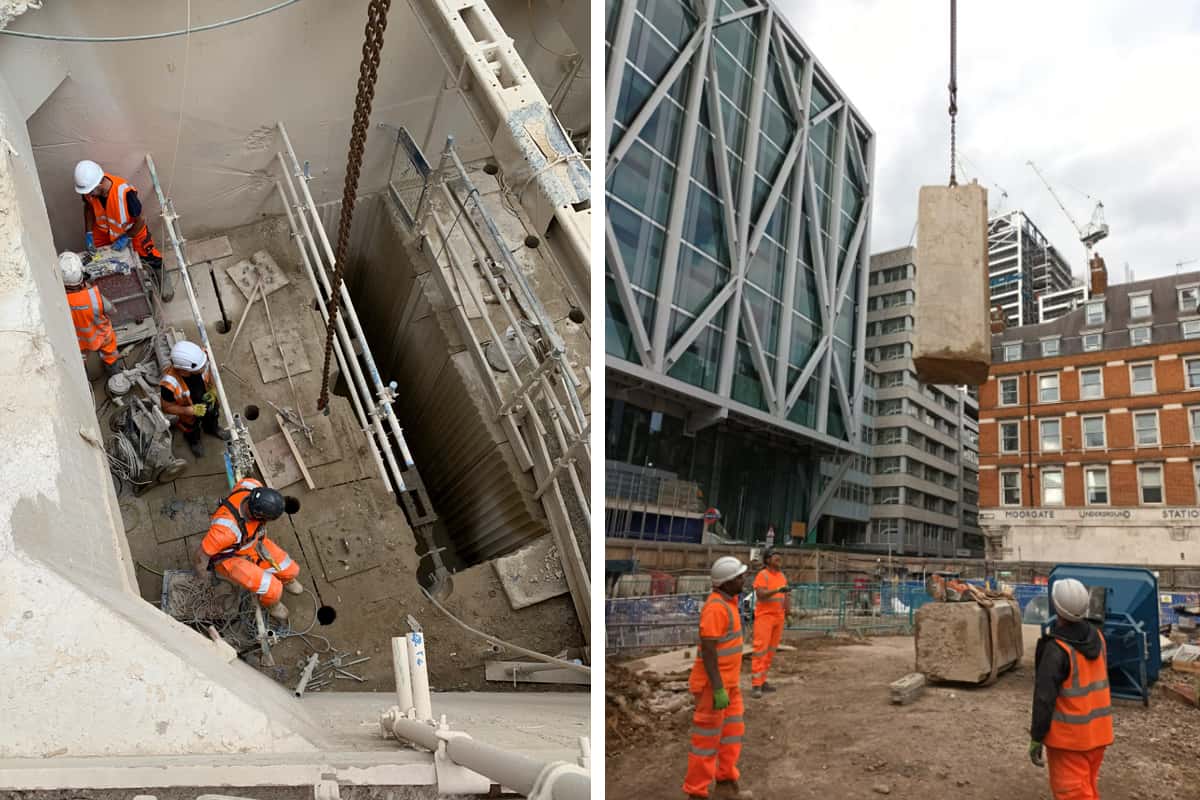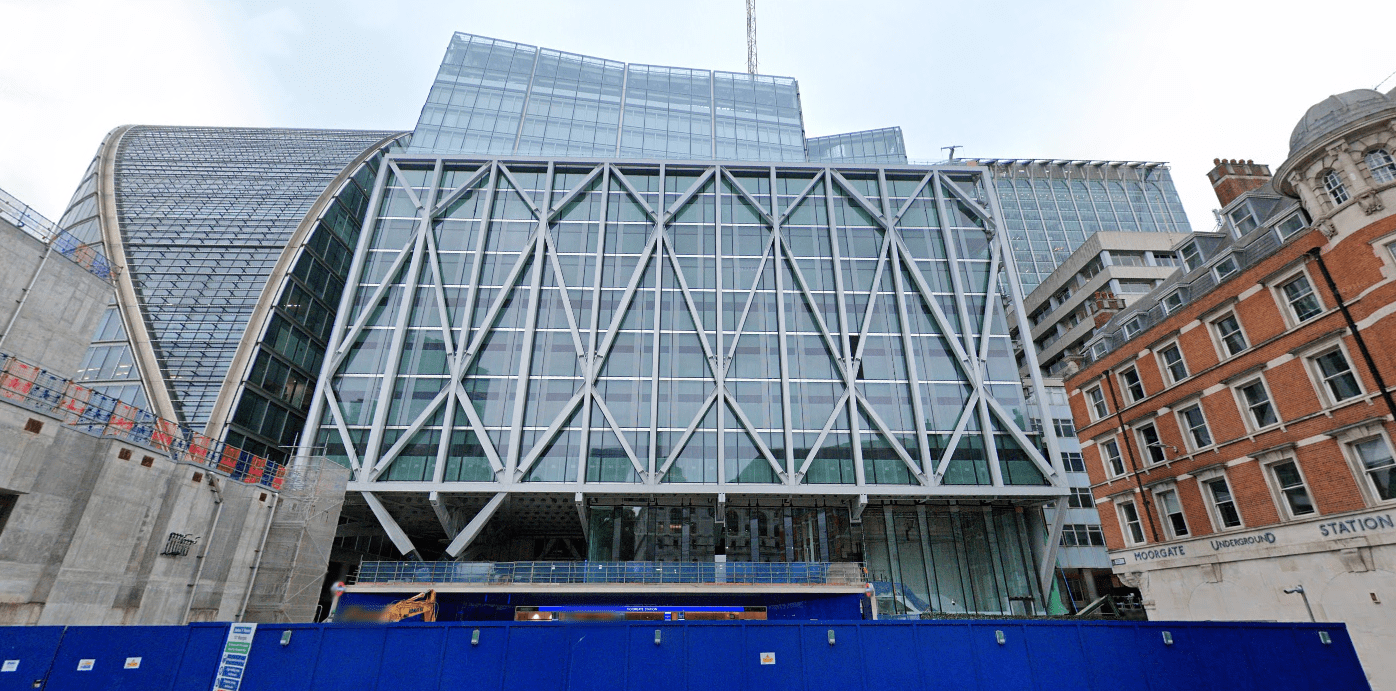101 Moorgate, London, EC2M (Enabling Works NPN)
Mace

11 months

£1.3 million

City of London, EC2M 6SA
Location & Overview
Our works at 101 Moorgate encompassed the demolition of an existing pile cap, the removal of a concrete cover slab which went over a Metropolitan Line tunnel, pile retention and pile insertion into a retained basement structure from a former construction yard for Crossrail. The 30m x 60m site is a continuing development and will become a commercial space. The close proximity of the site to Moorgate Station (a Grade II listed building), a Metropolitan Line tunnel, and The Globe public house (a Grade II listed building) and a busy Red Route meant that the works had to be approached in an adaptable and attentive manner.
Work, Challenges & Solutions
Our works included the setup of welfare, the establishment of vehicle access gates, the removal of the top cover slab over the Metropolitan Line tunnel, the removal of a small quantity of asbestos, the installation of basement propping and temporary works, stitch drilling, core drilling, wire saw cutting and lifting. A GPR survey was conducted of the entire site to ensure that there were no services in the ground. We retained the piling and the existing structure of the basement and inserted more piling. The basement was also propped at three levels to prevent wall movement, which would have breached the Metropolitan Line tunnel.
A particular challenge which faced our site team was that percussive methods of demolition could not be used within 15m of London Underground Limited (LUL) assets. Therefore, non-percussive methods had to be utilised when demolishing the pile cap. Hence, our team created an innovative solution of wire saw cutting and lifting with a crane. Our team also adapted to the pile cap being larger than expected – 2.8m rather than the expected 2m, which exceeded the limit the crane could lift. Our team elected that the concrete would be cut into 1x1m sections rather than 2x1m sections. Our innovative method of removing the pile cap was also more environmentally friendly than percussive methods.
Additionally, we intended to traffic vehicles over the LUL tunnel below the site; however, LUL stated that they wanted an initial survey (protection works) renewed to ensure that nothing would be dropped onto LUL trains below when we were trafficking over. We ensured that the survey was renewed, thus maintaining a positive relationship with LUL. Once this survey had been completed, we were able to bring vehicles over the tunnel.

Achievements
We made sure that sustainable practices were being employed on site; all water used for concrete cutting was recycled for use around site or was treated so that it could go back into the water course.
We also used electric plant on site, including floor saws, breakers, tools, compressors, and jet washes.
HVO fuel was used throughout the site, and all demolition arisings were crushed and used as recycled aggregates elsewhere.
All our concrete cutters were in house, based in Essex, and we also had an apprentice on site, who still works for John F Hunt.

